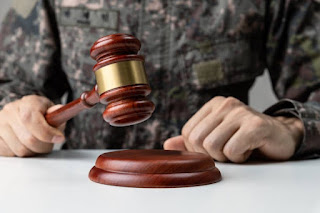Camp Lejeune Contamination: Uncovering the Legal Battleground
In the legal battle surrounding Camp Lejeune contamination, uncovering the truth has become a fierce and complex ordeal. The once quiet military base in North Carolina has become the center of attention as thousands of former residents and their families deal with the devastating health effects caused by contaminated drinking water. This article delves into the legal battleground where victims seek justice and compensation for the years of suffering they have endured. The fight to hold those responsible accountable has led to numerous lawsuits, creating a complex web of legal challenges and unanswered questions. From understanding the scientific evidence to navigating the intricacies of the legal system, victims and their legal teams face an uphill battle. Through extensive research and expert insights, this article sheds light on the many obstacles faced by those seeking justice for the Camp Lejeune contamination, highlighting the importance of uncovering the truth and providing closure for the affected individuals.
Camp Lejeune case lawsuits, a United States Marine Corps base located in Jacksonville, North Carolina, has been plagued by a long-standing contamination issue. The base's drinking water was contaminated with harmful substances for several decades, leading to severe health problems for thousands of military personnel, their families, and civilian employees. The contamination primarily resulted from the improper handling and disposal of hazardous chemicals, including volatile organic compounds (VOCs), such as trichloroethylene (TCE), and perchloroethylene (PCE). These chemicals infiltrated the base's water supply, exposing countless individuals to significant health risks.
The discovery of the contamination dates back to the 1980s, when the first signs of a problem emerged. However, it was only in the late 1990s that the full extent of the contamination was brought to light. The revelation shocked the affected individuals, who had been unknowingly exposed to toxic substances for many years. The subsequent legal battles aimed to hold the responsible parties accountable and provide justice for those affected.
For decades, the toxic chemicals seeped into the ground and infiltrated the base's drinking water wells. The contamination affected not only the active military personnel stationed at Camp Lejeune but also their families and civilian employees. It wasn't until the 1980s that the first signs of a problem emerged, with reports of unusual health issues among the base's residents. However, it took several more years for the full extent of the contamination to be uncovered.
The health effects of the Camp Lejeune contamination have been devastating for those exposed to the toxic chemicals. Numerous studies and investigations have linked the contaminated water to a range of serious health conditions, including various types of cancer, birth defects, neurological disorders, and autoimmune diseases. The long-term exposure to volatile organic compounds and other hazardous chemicals has had a profound impact on the lives of the affected individuals and their families.
Cancer, in particular, has emerged as a significant concern among the victims of Camp Lejeune contamination. Studies have shown elevated rates of cancers such as leukemia, multiple myeloma, liver cancer, kidney cancer, bladder cancer, and breast cancer among the exposed population. The staggering number of cancer cases has raised alarm bells and spurred the legal battles to seek justice and compensation for the victims.
The legal battles arising from the Camp Lejeune contamination have been complex and multi-faceted. Thousands of individuals, including former residents and their families, have filed lawsuits against the United States government and various other parties, alleging negligence, failure to warn, and other legal claims. The litigation process has involved intricate legal challenges, scientific evidence, and the involvement of multiple parties.
One of the key legal challenges has been establishing causation between the contaminated water at Camp Lejeune and the health conditions experienced by the victims. Proving a direct link between exposure and illness is often a difficult task, requiring extensive scientific evidence and expert testimony. The legal teams representing the victims have worked tirelessly to gather evidence and build strong cases to support their claims.
Several key players and organizations have been involved in the legal battles surrounding the Camp Lejeune contamination. The United States government, as the responsible party for the base's operations, has faced numerous lawsuits seeking compensation for the victims. Additionally, private companies that supplied or manufactured the chemicals found in the contaminated water have also been named as defendants in many of these lawsuits.
The legal teams representing the victims have played a crucial role in seeking justice and compensation. These teams, consisting of attorneys specializing in environmental law, toxic torts, and personal injury, have worked tirelessly to navigate the complex legal landscape and advocate for their clients. Their expertise in scientific evidence, toxicology, and environmental regulations has been instrumental in the legal battles.



Comments
Post a Comment